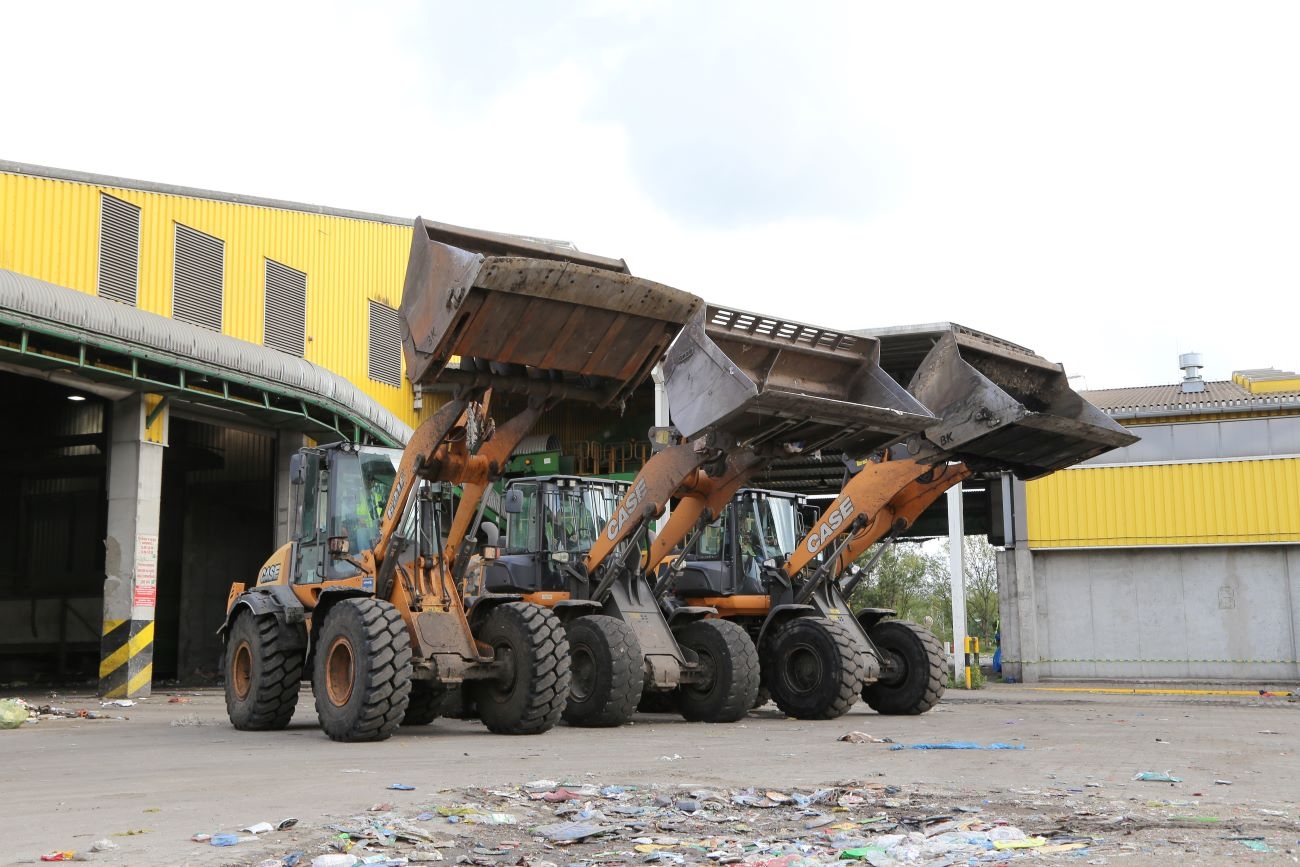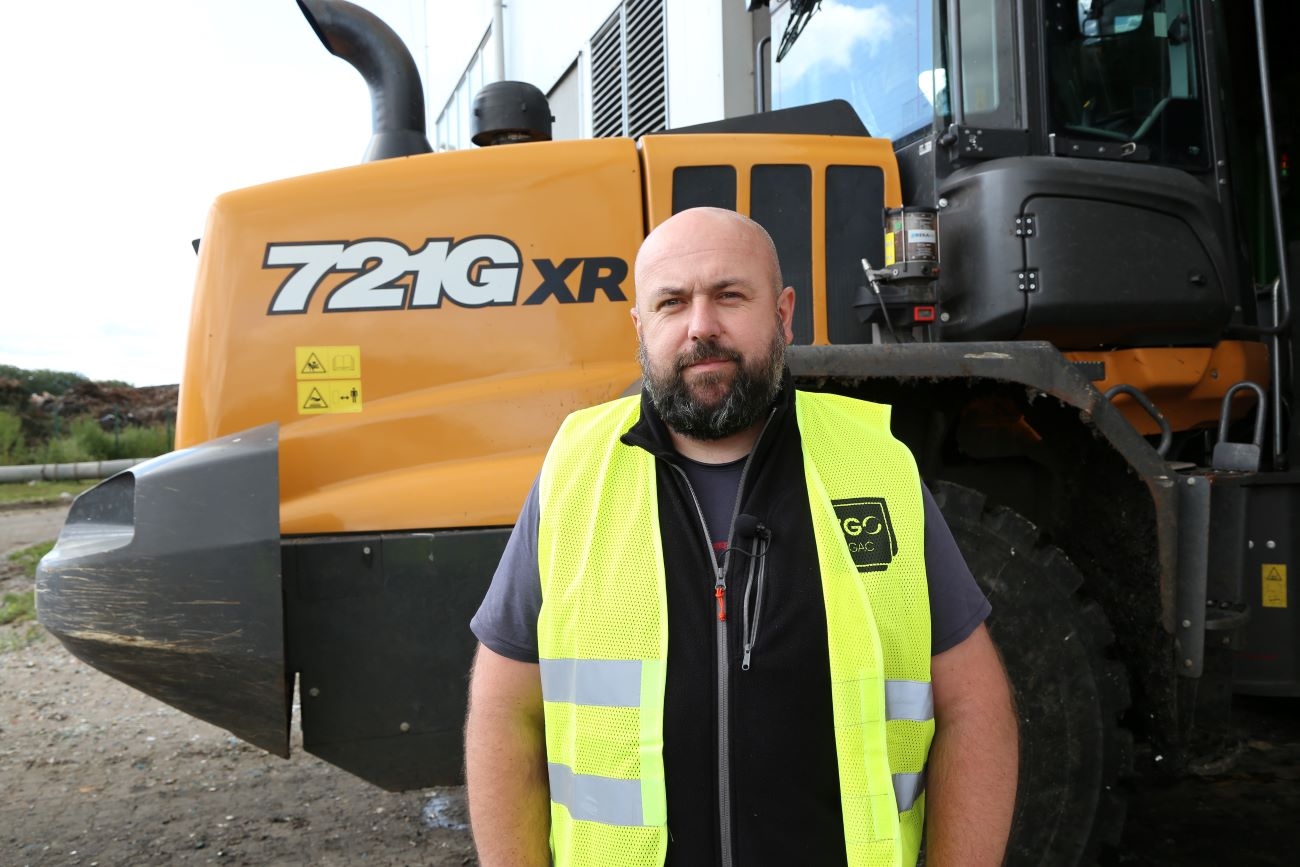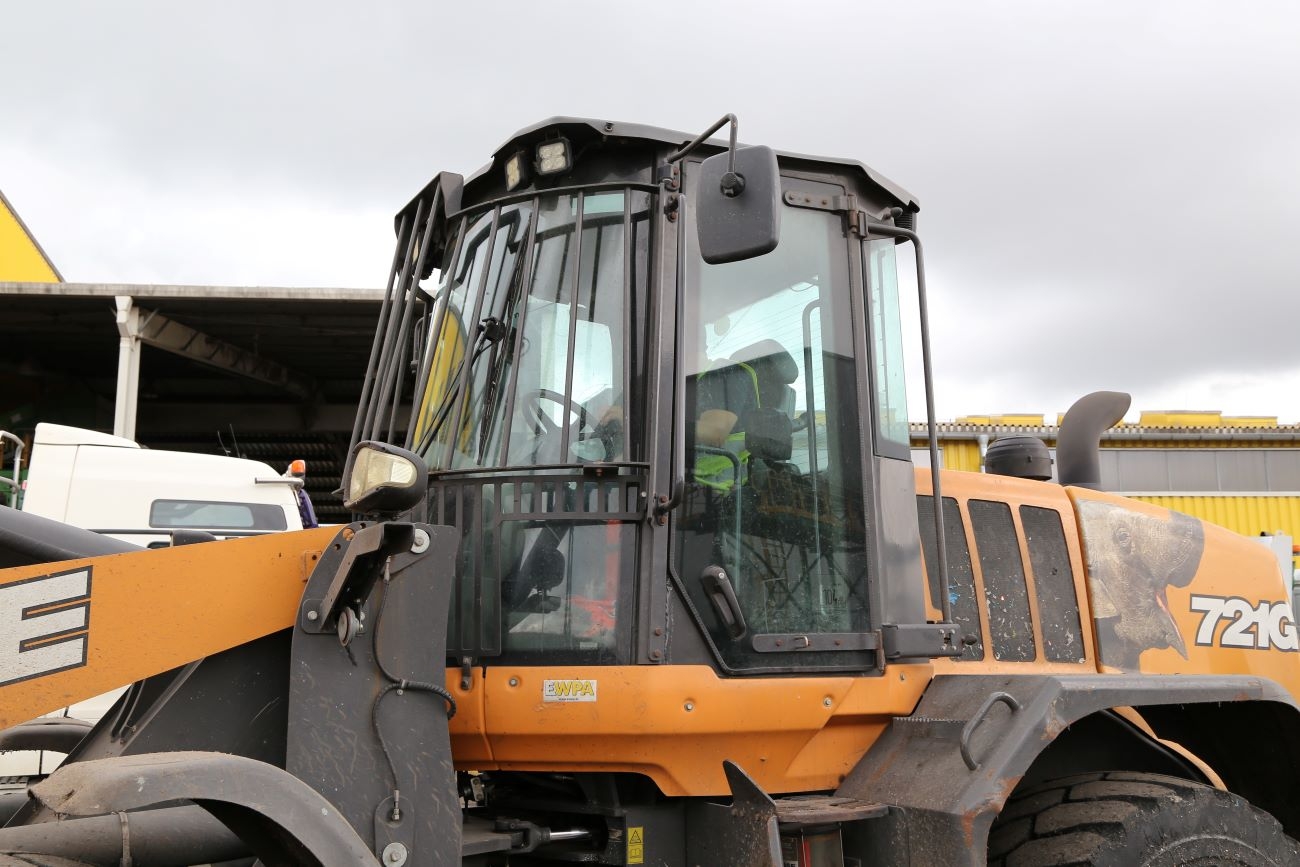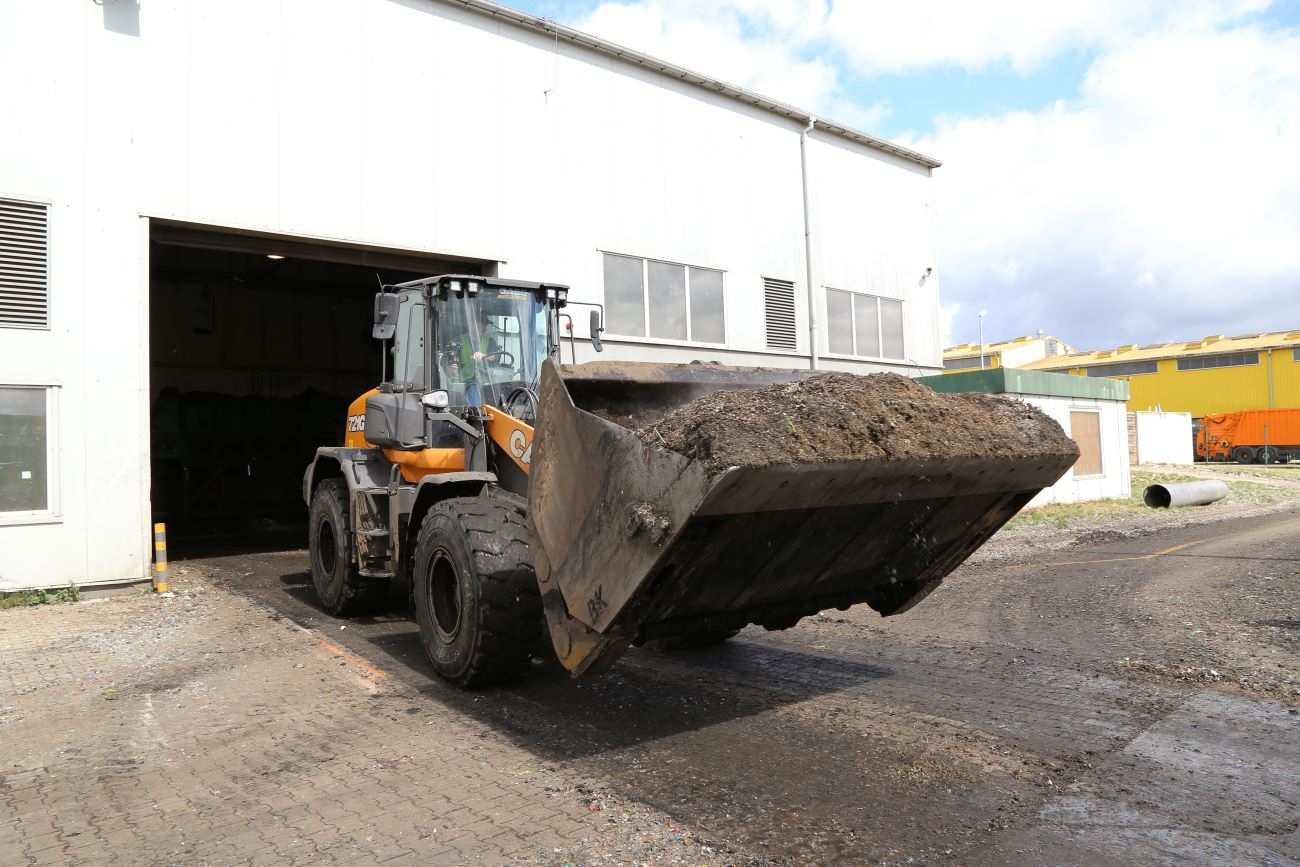CASE wheel loaders are working at waste management site

Until recently, at the Zakład Gospodarowania Odpadami GAĆ Sp. z o. o. near Oława (Poland), most of the loading work was performed by telescopic handlers. Today, though, the situation has changed. Three articulated wheel loaders – all from the CASE brand – are increasingly performing tasks that were previously carried out by telescopic handlers.
The CASE 621F wheel loader was the first to be delivered to the plant in 2012. So far, the machine has worked over 17 thousand hours without experiencing any major problems – it functions "normally". Perhaps more impressive, the site’s maintenance manager has not even considered selling the older model. Instead, he wants to upgrade it by installing additional hydraulic lines into it so that it can be equipped with a bucket with a grab. Doing so will improve the machine’s performance because it will allow the bucket to unload larger and varied waste more easily. The main tasks assigned to the 621F are ground waste collection and loading the waste shredders. Previously, though, it was used to operate the fermentation and composting plants, which is now the remit of two new CASE 721G XR loaders.

The older 721G XR wheel loader is mainly used in the waste reception shed, but it is also used to load recyclable materials onto semitrailers.
Why did you decide to buy them?
We used to receive a lot less waste than we do today, which meant that we did not need heavily loaded machines. At that point in time, we were happy with telescopic loaders, which were supported by the 621F loader. However, due to the development of the plant and the ever-growing volume of waste we now receive, we needed to purchase more equipment. We decided that articulated wheel loaders were the best solution and that we also required higher tonnage classes to cope with the greater volumes of waste coming into the plant, explains Grzegorz Czapka, maintenance manager at ZGO Gać. In his opinion, telescopic handlers no longer fulfil the plant's expectations when working with municipal waste. Telescopic handlers perform well with segregated recyclables such as aluminium cans or PET bottles, but with municipal or biodegradable waste, stronger and heavier equipment is required.
Grzegorz Czapka, the maintenance manager at ZGO Gać, believes that buying the CASE machines was an excellent decision, as they guarantee far more efficiency than telescopic handlers, they are more economical in use, and the operators like working with them.
Facing the tricky decision of purchasing articulated wheel loaders, we had a choice of several machines from a range of manufacturers. We opted for CASE, and I think it was the right choice. We primarily chose CASE because of our positive experiences with the 621F loader. The machine always performs well. All the tasks assigned to it over the years have been completed to one hundred per cent of the requirement. Of course, there have been some minor faults along the way, but that is just something that happens with every hardware item. Its quality is best demonstrated by the fact that it is still in use today, recalls Czapka.
He expands: We’ve had the chance to get to know the machine well. The operators got used to working with it and the mechanics liked it and got to know its structure and specification. So, nobody in our team wanted to go with a different brand! On site, it is much easier having several machines from the same manufacturer because you don't have to learn how the new equipment functions and the service is more straightforward.

Thanks to the combination of the extended arms (version XR) and the high tip bucket, the machine creates piles efficiently and easily manages the tallest stacks.
The latest CASE wheel loaders at the ZGO Gać site have been equipped with extended arms (XR version) that increase the maximum height to the bucket pivot pin by 0.39 metres. The arms work in combination with the high tip bucket (4m3 capacity in both machines), which makes it easy to conveniently manage the semitrailers and create high piles of various types of waste and, therefore, better use of the space available on site. Significantly, using an extended arm with a high tip bucket does not require the installation of an additional counterweight. It can operate this way because the engine is located at the rear of the loader, meaning the machine remains stable despite the greater load on the high tip bucket.

Both 721G XR machines use high tip buckets with 4 m3 capacity, equipped with perforated extension.
Furthermore, the wheel loader’s set of radiators is located just behind the cabin in a cube formation, which reduces the amount of dirt that gets stuck under the rear wheels of the machine – in addition to providing a more favourable layout. It is important that the radiators are arranged in a cube formation when working with waste because this system ensures a better flow of fresh air, and therefore more efficient cooling, compared to the more common “sandwich structure". Both machines are equipped with a centralised greasing system and L5 tyres, which are more resistant to mechanical damage.
While specifying the 621F, we did not opt for central greasing because the operator had more time to dedicate to the machine. Now, though, the situation has changed. Several operators work on the same wheel loader and each loader is used very intensively. From the minute they are switched on at 6:00am, their engines do not stop until they are turned off at the end of the day. Of course, centralised greasing does not solve every issue, but 80‑90% of the points are managed automatically, which facilitates the operation of the facility,”notes Czapka.
The cabin is equipped with windscreen protection because the municipal waste being handled can contain anything, including rocks and bricks.
To prepare the machines to work with waste, the specifications of the two 721Gs were selected to optimise the operator’s safety and work conditions. For instance, the wheel loader used for municipal waste has been fitted with a windshield protector because stones, bricks and other types of materials can be found in this waste and can flick up towards the cabin. Both machines were also installed with a carbon filter to improve the quality of the air flowing through the interior of cabin.
The first CASE 721G XR wheel loader became a member of the ZGO Gac fleet in 2017. It has since exceeded 10,000 hours of operation. The newest, almost identical machine was then bought two years later and has already worked over 2,500 hours.
There is a clear division between the tasks of the two wheel loaders. The older model is used in the sorting department to pile waste and load it into the bag splitter, which is the start of the sorting line. When its basket is full, the wheel loader operator has approximately 20 minutes to load in glass and steel cans. The second 721G XR is used for fermentation and aerobic stabilisation activities, where according to the implemented processes and the schedule, it transports the processed waste among the various sites and loads the compost into the mobile screen. Sometimes it is also used to perform alternative fuel (RDF) loading operations onto mobile-bed semitrailers.
The latest CASE wheel loader is mainly used for loading and unloading sealed boxes containing the aerobic stabilisation of waste after the fermentation process.
What do you think of the new CASE wheel loaders after several years of intensive use?
Czapka confirms that they offer real benefits: “The operators are happy with these machines because they provide much greater efficiency and comfort than telescopic handlers. The largest buckets of the telescopic handlers had a capacity of 2.5 m3, while the CASE machines are equipped with 4-metre buckets, which means all our operations can be performed much faster. As the amount of waste the plant receives continues to grow, this increased speed really matters. Significantly, even though they are much more efficient, their fuel consumption rate is not much higher than that of the telescopic handlers. During normal operations, the average fuel consumption rate is about 8.2-8.5 litres per hour, whereas the telescopic handlers consume 7 litres per hour, despite being smaller and less powerful. These numbers speak for themselves,” concludes Czapka.





